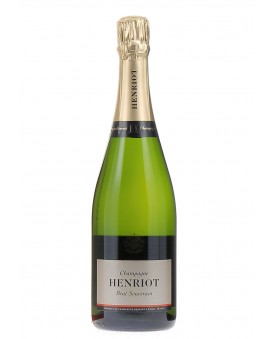- Abelé 1757
- Agrapart
- Alfred Gratien
- Apollonis
- AR Lenoble
- Armand de Brignac
- Ayala
- Barons de Rothschild
- Beaumont des Crayères
- Benoît Lahaye
- Bergeronneau Marion
- Besserat De Bellefon
- Billecart - Salmon
- Blin
- Bollinger
- Bruno Paillard
- Canard Duchene
- Castelnau
- Cattier
- Charles Collin
- Charles Heidsieck
- Chartogne-Taillet
- Chassenay d'Arce
- De Saint Gall
- De Sousa
- De Venoge
- Delamotte
- Demoiselle
- Deutz
- Devaux
- Diamant Vranken
- Dom Perignon
- Drappier
- Duval - Leroy
- Egly-Ouriet
- Epc
- Fleury
- Gosset
- Heidsieck & Co Monopole
- Henri Giraud
- Henriot
- Jacquart
- Jacquesson
- Jean-Noel Haton
- Joseph Perrier
- Konrat
- Krug
- Lafitte
- Laherte
- Lallier
- Lanson
- Larmandier-Bernier
- Laurent-Perrier
- Leclerc Briant
- Lombard
- Mailly Grand Cru
- Moet Et Chandon
- Montaudon
- Moussé Fils
- Mumm
- Napoleon
- Nicolas Feuillatte
- Pannier
- Paul Goerg
- Perrier Jouet
- Philipponnat
- Pierre Gimonnet
- Piper - Heidsieck
- Pol Roger
- Pommery
- Rare Champagne
- Louis Roederer
- Ruinart
- Salon
- Selosse
- Soutiran
- Taittinger
- Thienot
- Tsarine
- Veuve Clicquot
- Veuve Lanaud
Henriot Champagne

A family-owned and independent company, Henriot offers champagnes where Chardonnay is the king since its creation in the 19th century. Its cuvées are therefore renowned for their elegance, their finesse and their lightness.
This very qualitative Champagne House offers us fine and chiseled champagnes of which the Cuvée de Prestige : the Cuvée des Enchanteleurs is the quintessence...
Champagne HENRIOT
It was in 1808, under Apolline Henriot, that Champagne Henriot was officially founded. She was the niece of the very famous Abbé Godinot, an erudite man who contributed to improvements in viticulture and the making of the Champagne wine. Apolline, an enterprising woman of great character, sold her wines both in France and abroad. The champagne wines became a huge success with royalty and it was only natural that Champagne Henriot became the favorite firstly at the Dutch court, then in Austria and Hungary with the Hapsburgs.
She passed on her savoir-faire to her grandson, Ernest : a family tradition was born. In 1875, Ernest enlarged the company's holdings and developped the House. At the end of the 19th century, the phylloxera crisis reached the Champagne vineyards but Emile Marguet, (father in law to Paul Henriot) was one of the first to reconstitute his vineyards with grafted stock. From then on and from generation to generation, the House of Henriot has devoted all its talent to creating the most superb wines from grapes carefully selected from the great "terroirs" on the Montagne de Reims and the Côte des Blancs.
Since 1808, Champagne Henriot, one of the last independent and family-owned houses in Champagne, has pursued a tradition of excellence – a fragile balance between delicacy, intensity, and purity. For seven generations, the family has selected only the very best vineyards, concentrated on the purity of chardonnay and has upheld the utmost respect for time in order to ensure the cuvee has an opportunity to reach its full expression.
The emotion of style
A unique elegance, a chiseled style From the first standards established by Apolline Henriot, who founded the house in 1808, Henriot champagnes have been distinguished by their finesse, exceptional elegance, complexity and striking, brilliant richness.
The assemblage
The choices made in blending perpetuate the house style: chardonnay reigns in proportion (fifty to sixty percent). It brings finesse, elegance, richness and freshness. Pinot noir gives essential structure. Pinot meunier contributes fruit complexity. Non vintage wines may contain as many as fifty different crus in precisely orchestrated balance, with roughly twenty percent reserve wines. It is again Champagne Henriot’s task to impart a distinct personality to its wines. These wines, which may be a decade in age and are tasted at least every three months, comprise the house’s library, guaranteeing the perpetuity of its style.
Maturing
The bottles remain for a long maturing period in the calm and dark of Henriot cellars in Reims. In these caves, dug out of the chalk to a depth of 18 metres, the temperature (11°) and hygrometry (98%) are constant. To allow the grape varieties full expression, Champagne Henriot observes maturation periods that are normally twice as long as those required by law. The time necessary for each cuvée to reach its full potential.
Dosage
This is the last touch the cellar master can bring to a cuvee. The dosage is measured (approximately 8g/l) to obtain an optimal balance and maturity of the wines.
Trusted Reviews
97% of satisfied customers Shipping 24H
Order before 11AM Gift Message
free + 1200 références
in stock Storage
Hydro-regulated Secure Payment
Credit Card, Amex, Paypal, Bank transfer 














